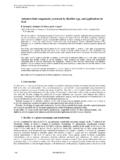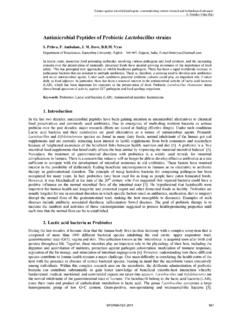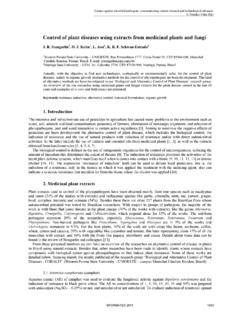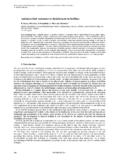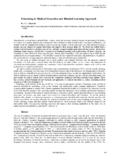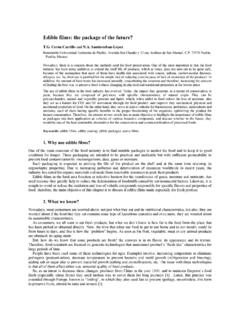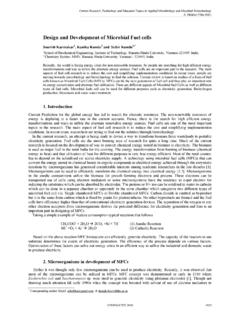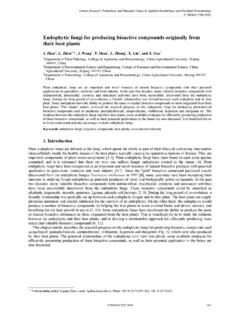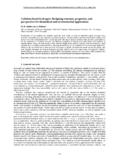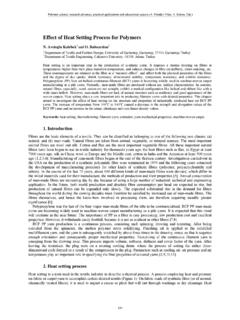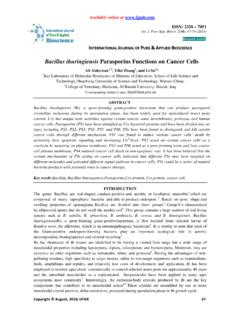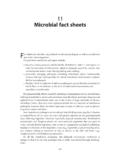Transcription of Bacillus spp. thermal resistance and validation in …
1 Current Research, Technology and Education Topics in Applied Microbiology and Microbial Biotechnology A. M ndez-Vilas (Ed.). _____. Bacillus spp. thermal resistance and validation in soups A. Rodr guez-Lozano, M. Campagnoli, K. Jewel, F. Monadjemi and Gaze Campden BRI, Station Road, Chipping Campden, Gloucestershire GL55 6LD, United Kingdom The purpose of this work was to obtain heat resistance data relevant to pasteurisation regimes and to model the effects of a range of temperatures (93 to 107 C) and pH ( to ) on the survival of the several Bacillus spp.
2 Spores that have been associated with spoilage of foods ( Bacillus pumilus, B. licheniformis, B. subtilis, and B. megaterium), and to validate the results obtained by heating the spores in soups at selected temperatures. The thermal resistance observed in soups for 3 out of the 4 Bacillus spp. tested were higher than predicted. This may be due to the viscosity of the soup offering protection to the test organisms during the heat treatment; alternatively other ingredients in the soup recipes may cause this effect. This work will assist in the better design of thermal processing for the elimination of bacilli in soups.
3 Keywords Bacillus spp.; thermal resistance ; validation 1. Introduction Bacillus spp. are sporeforming bacteria that are widely distributed in nature, and commonly associated with a variety of food products such as milk and dairy products, meat and meat products, rice, pasta, and dried products such as spices. Spore formation allows these bacteria to survive in the environment and provides them with resistance to pasteurisation treatments. A very diverse range of pasteurised food products are now available to the consumer and with world-wide preferences for more highly spiced and flavoured foods, these products are likely to contain many different ingredients which could be contaminated with Bacillus species.
4 Traditionally these microorganisms have been associated with the spoilage of food products; however, recently they have been linked to potential food poisoning issues. Food spoilage Bacillus pumilus, B. licheniformis, B. subtilis, and B. megaterium have been traditionally associated with spoilage of food products, in many cases with a pH as low as [1]. One of the main concerns associated with these foods is that they rely on low pH to prevent and control the growth of Clostridium botulinum. In some instances, growth of some of these Bacillus species has been observed to increase pH and this may then allow the germination of any C.
5 Botulinum spores present in the product. Many Bacillus spp. are used for the production of commercial enzymes, including proteases, lipases, and amylases among others. The production of these enzymes is usually beneficial, but in some cases it is unfortunately detrimental for the food industry. As an example, a problem that is often related to soups and products rich in carbohydrates ( puddings) is referred to as "thinning". This phenomenon has been noted to occur in sterile puddings between 2 weeks and 6 months after sterilisation [2].
6 This is probably due to the production of saccharolytic enzymes by heat resistant Bacillus spp. that will break down the carbohydrates present in the product [2-5], causing a characteristic thinning and decrease in viscosity of sauces. This continues to remain a major concern for industry, but very little research has been done into this issue[2;4;6]. Thinning could happen in two different ways: a. Spores survive the pasteurisation/commercial sterility treatment and subsequently grow, causing the characteristic spoilage.
7 B. Extracellular enzymes are synthesized prior to pasteurisation/commercial sterility. The process is sufficient to eliminate viable organisms but does not inactivate the preformed heat stable enzymes. These remain active after the process and cause spoilage. One of the difficulties in detecting this type of spoilage resides in identifying the Bacillus species that produce the enzyme in a spoiled product. There are reports that show that some of the Bacillus enzymes may be resistant enough to survive a pasteurisation treatment, even heat treatments as high as UHT in puddings [2;6].
8 If this is the case, no bacteria would be detected when investigating a thinning spoilage. In some cases, however, it has been noted that Bacillus spp. have survived processes, causing spoilage by growth. A good example was reported by Thomas and Masters [4], who found that the spoilage of pre-cooked potato-topped pies was associated with amylase activity related to viable Bacillus spp. during storage. Additionally, there are many reports of Bacillus spp. surviving baking processes and causing ropiness in bread [7-10], a condition caused by the production of exopolysaccharides and the breakdown of the starches by amylases that gives bread an unpleasant and "slimy" appearance.
9 In some foods, the ability of a number of Bacillus species to produce enzymes (mostly proteases and lipases) has been used in a positive manner to produce the food. Good examples are some African and Asian fermented dishes [7;11-16]. The enzymes are used in the fermentation process of these products; for example, the Thai fermented soy FORMATEX 2010 537. Current Research, Technology and Education Topics in Applied Microbiology and Microbial Biotechnology A. M ndez-Vilas (Ed.). _____. product called "Thua nao", or the African fermented locus bean product called "soumbala", and the fermented karkade called "bikalga".
10 It is interesting to note that most of these bacilli have also been isolated from fermented sausages [17]. Epidemiology and food safety From the food safety point of view, the most important species is B. cereus, known for its ability to form toxins and cause foodborne illnesses. Because of this, extensive work has been conducted on B. cereus heat resistance and growth characteristics. On the other hand, very little knowledge exists on the thermal resistance of the 4 Bacillus species in this study (Table 1). Table 1 Results for D values reported on B.
